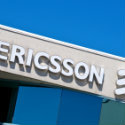
Two weeks into the second quarter and Ericsson has started to pepper its investor updates with vaguely unsettling words like "implication" and "mitigation." Due to publish its first-quarter results next week, the Swedish equipment maker has clung to short-term guidance of "limited to no impact on customers" from COVID-19. Beyond the March-ending period, the outlook grows foggy.
On the plus side, Ericsson remains confident it can meet forecast demand, despite concern about supply chain disruption. The caveat is that its latest forecast this week reflects "known implications and expected outcome from mitigations made following the outbreak." All that sounds like investor speak for project delays and spending cuts by operators.
Delays will stem partly from the postponement of European spectrum auctions, already long overdue, as far as Ericsson is concerned. Plodding regulators in markets such as Austria, the Czech Republic, France, Portugal and Spain are said to have brought auction plans to a halt. Analysts at Jefferies now think a second 5G auction in the UK, originally scheduled for Spring 2020, could plausibly face a one-year delay. None of this is good for a 5G technology champion that earns money when networks are "live."
Moreover, as revenues are squeezed, some operators will cut spending to protect free cash flow (and dividends for shareholders). Market-research firm Analysys Mason is now forecasting a 3.4% sales decline in developed markets this year. 5G looks vulnerable in this climate because it has not yet had a chance to establish itself as an essential network service. Greek incumbent OTE, which Ericsson announced as a 5G customer in late March, was due to begin a 5G upgrade in May. This week, CEO Michael Tsamaz told Reuters the project may now be delayed by up to four months.
TXO Systems, a dealer in used network components, says many operators are prioritizing the maintenance of existing services over investment in new ones. "There are some customers that are determined to push ahead with 5G and be the first into the market, but we are seeing a lot more engineering and procurement teams with a COVID-19 budget to support the legacy projects," says Kieran Crawford, TXO's sales director.
Analyst firm ABI Research is predicting a nasty slump in 5G spending this year, blaming supply chain disruption. "The current virus outbreak will likely delay the deployment of advanced 5G NR [new radio] systems," said Jiancao Hou, a senior analyst with the company, in a statement. ABI's forecast is that 5G equipment revenues will be as much as a tenth lower than they would have been sans virus.
How bad would this be for Ericsson? Unfortunately, the company does not break out 5G revenues from the overall annual figure of about $22.6 billion. But as a mainly mobile vendor, it may have greater exposure to this market than either Finland's Nokia or China's Huawei, which have broader portfolios of network products. Last year, about $3 billion of Huawei's revenues came from the 5G market, according to Eric Xu, one of Huawei's rotating CEOs. That is roughly 7% of what its carrier business made altogether.
Want to know more about 5G? Check out our dedicated 5G content channel here on
Light Reading.
Some analysts remain fairly bullish. Fitch Ratings sees little risk of 5G spending delays in the US, where Ericsson made nearly one third of its entire sales last year. Operators there will slash operating expenses and non-strategic capital expenditure before they reduce important investments in 5G, it says. Since the virus struck, Verizon has already lifted its capex guidance range this year by $500 million, to between $17.5 billion and $18.5 billion, notes Fitch.
Nevertheless, another concern was that housebound consumers using Wi-Fi and broadband would have little need for mobile data services during the pandemic, giving Ericsson's customers less reason to invest in additional 4G capacity. TXO's Crawford says much of the recent demand has been for optical transport equipment, which Ericsson does not manufacture. Curiously, though, most operators have seen an increase in mobile data demands, according to Ericsson, even though residential networks have absorbed the main share of the traffic growth. One reason could be the generous mobile data allowances some operators are providing to customers.
When it comes to the supply chain, Ericsson insists that all its main production sites are "up and running," after its Chinese facility reopened on February 10. It has been able to minimize the risks by maintaining a global network of facilities, with sites in Brazil, China, Estonia, India, Mexico, Poland and the US. But a recent survey by NATE, a US trade association, showed that various tower companies in the US have pulled crews off projects due to COVID-19 concerns. TXO, similarly, has had to make do with fewer staff on some field projects, says Simon Griffiths, its chief financial officer. On the supply side, it would be odd if Ericsson went entirely unscathed.
Related posts:
— Iain Morris, International Editor, Light Reading
About the Author(s)
You May Also Like











